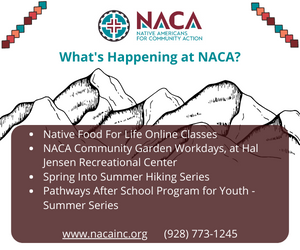 It appears the economic woes of recent years haven’t led to a whole lot of belt-tightening at home. According to the Federal Reserve’s latest statistics, Americans carry $2.4 trillion in unsecured debt. That includes credit cards and personal loans. By itself, the average credit card debt per cardholder is hovering around $6,000.
It appears the economic woes of recent years haven’t led to a whole lot of belt-tightening at home. According to the Federal Reserve’s latest statistics, Americans carry $2.4 trillion in unsecured debt. That includes credit cards and personal loans. By itself, the average credit card debt per cardholder is hovering around $6,000.
The numbers might not mean much, until you focus on a single, typical household that’s participating in the nation’s indebtedness. Mom and dad are unlikely to be saving for retirement, much less the kids’ college education. Every month, they struggle with which bills to pay: Phone? Lights? Credit cards? They might be buying fast food on credit – $51 billion of fast food was charged in 2006, compared to $33 billion the year before. When a car tire blows, they struggle with how to fix it. They can’t answer their phones between 5:00 and 9:00 p.m., because angry creditors are harassing them.
Myriad solutions have come to the fore, including companies that charge a fee to consolidate debts and a number of best-selling books. And then there’s Dave Ramsey. The once-bankrupt real estate investor-turned money counselor-turned talk show host-turned financial motivational speaker has become something of a sensation. His books, “Financial Peace,” “More Than Enough” and “The Total Money Makeover” have become New York Times bestsellers. His Financial Peace University classes are offered via DVD at local venues all over the country – including, three times a year, at Flagstaff Christian Fellowship on South Beaver Street.
Dan Barton, the local instructor, says he hit a personal bottom with debt just before the birth of one of his children. He remembers the moment when the receptionist asked how he was going to pay the bill: “I looked down the hall one way, and then I looked down the hall another way, and I said, ‘Do you take credit cards?’ I walked out of there like, ‘Oh my goodness. I just put a child on a credit card.’” He and his wife sold one of the cars to pay that bill, and they haven’t looked back. He says these days, the idea of owing money makes him feel claustrophobic.
“Scripture says the borrower is slave to the lender,” he said. “We have felt that enslavement.” And so Barton hosts the local classes for Financial Peace University, and he gets to pass on his experience of coming out of enslavement. He says one of the most rewarding aspects is watching people’s transformations as they buck the downhill slope of debt that is so culturally ingrained. “There are stories like that,” he said, “couples that are doing well, having common goals. Single people knowing what to do, whereas before it was like, ‘I know I should save, but for what?’ It’s given people a road map so they can know what to do first, second and third. And there’s a rationale behind it. It makes sense.”
The overall rationale, as Dave Ramsey presents it, is that our dependency on credit isn’t working. It isn’t working at the household level when people don’t have money to cover emergencies or retirement after spending wildly, on credit, for vacations and toys. And it doesn’t work nationally, when debt statistics are staggering and the majority of our population isn’t building wealth.
Steve Fazzari, an economist at Washington University, goes so far as to argue that consumer spending and indebtedness hit a wall in 2007, and that was the root cause of the Great Recession of the past several years.
Ramsey’s approach, which he sometimes touts as the “Great Recovery,” aims to tackle that root cause – and it starts with each individual consumer employing discipline, drive and basic maturity in order to control spending, dump debt and build wealth.
Barton acknowledges that debt is “the soup this culture swims in, and the class is counter-cultural.” But for him and the scores of people who have participated in his classes, the time and effort required to break free of that consumptive norm pays dividends. “I call it guilt-free spending,” he says. “I call it guilt-free living.” FBN
Reporter’s Notebook: Grabbing Hold of The Purse Strings
By Anne Minard
Flagstaff Business News
When my brother first offered to pay my fee for a Financial Peace University class last spring, I demurred. I didn’t think I was doing too poorly with my finances. I’d gotten free of credit card debt years before, my $15,000 in student loans were on a reasonably (I thought) low-interest repayment plan, and I kept such a modest overhead that I rarely faced the sorts of financial pressures that drive most people to despair. I’m single with no kids, so I’m not responsible for providing for anyone. True, I gripped the self-employment income roller coaster with an iron fist, frequently emptying the cupboards while waiting for the next paycheck, and sweating the moments when my student loan payment, or rent, seemed out of reach. But I wasn’t yet willing to admit that there could be a better way.
That changed this summer, when my dad died unexpectedly. He had worked hard all his life, and he had saved and planned so that his children would get a boost from that hard work. Between my two brothers and I, our inheritance wasn’t enormous, but I recognized it as a once-in-a-lifetime opportunity to get ahead financially. I was scared; I didn’t want to blow it. I didn’t want to throw away my chance to live a more financially stable life, and I especially didn’t want to disrespect my father’s efforts. So I got in touch with my brother to see if his offer still stood – it did – and I got online to find a local Financial Peace University class.
I found the Dave Ramsey videos inspiring from the first class, and I relished the support of my classmates who share healthy financial goals. I started tackling the Seven Baby Steps right away. Due to my new situation, putting $1,000 in an emergency savings account was a breeze. After a bit of waffling (and some encouragement from instructor Dan Barton and the financial advisor at my bank), I decided to use much of the liquid part of my inheritance to dump my student loan debt and pay off some small loans to friends. So the second baby step – the debt snowball – also went away.
Since then, things have gotten harder. See, I like to spend. And the “free money” that was left burned a hole in my pocket until it went for books, travel, clothes I wouldn’t have bought otherwise, and fun things I might not have been able to do – like a membership at the climbing gym. That was a thrilling stage, and I don’t think my dad would have minded. But I also knew it wasn’t a sustainable track if financial stability was my goal. So, with more input from Barton and the trusted friend I’ve chosen as my “financial accountability partner” for the class, I was reminded to proceed with Baby Step 3 – building up the emergency savings so it could cover expenses for three to six months. So now I’m faced with work that for me is tough and somewhat spiritual, by acknowledging that I have everything I need – and most of what I want – and saving some of my “free” money instead of spending it. It’s a learning process, to be sure.
The last four baby steps have to do with saving for retirement and building wealth. Thanks to my Dad’s efforts, I now have a healthy start on an IRA, so I don’t have to worry about starting from scratch. For me, the real challenge is going to lie in the day-to-day management of my money while I’m young and working – so the periodic highs in my self-employment income don’t give way to such stressful lows. That’s going to mean budgeting, planning and keeping those short-term wish lists to a minimum – the very same challenges Ramsey students face no matter which of the Financial Peace University baby steps they’re on. FBN
Want to go? Another Financial Peace University course will start Jan. 24 at Flagstaff Christian Fellowship. For more information or to register for an online course, visit the Financial Peace University site at www.daveramsey.com.
The Seven Baby Steps
• $1,000 in an emergency fund
• Pay off all debt except the house utilizing the debt snowball
• Three to six months’ expenses in savings
• Invest 15 percent of your household income into Roth IRAs and pre-tax retirement plans
• College funding
• Pay off your home early
• Build wealth and give!
Source: Dave Ramsey’s Financial Peace University





